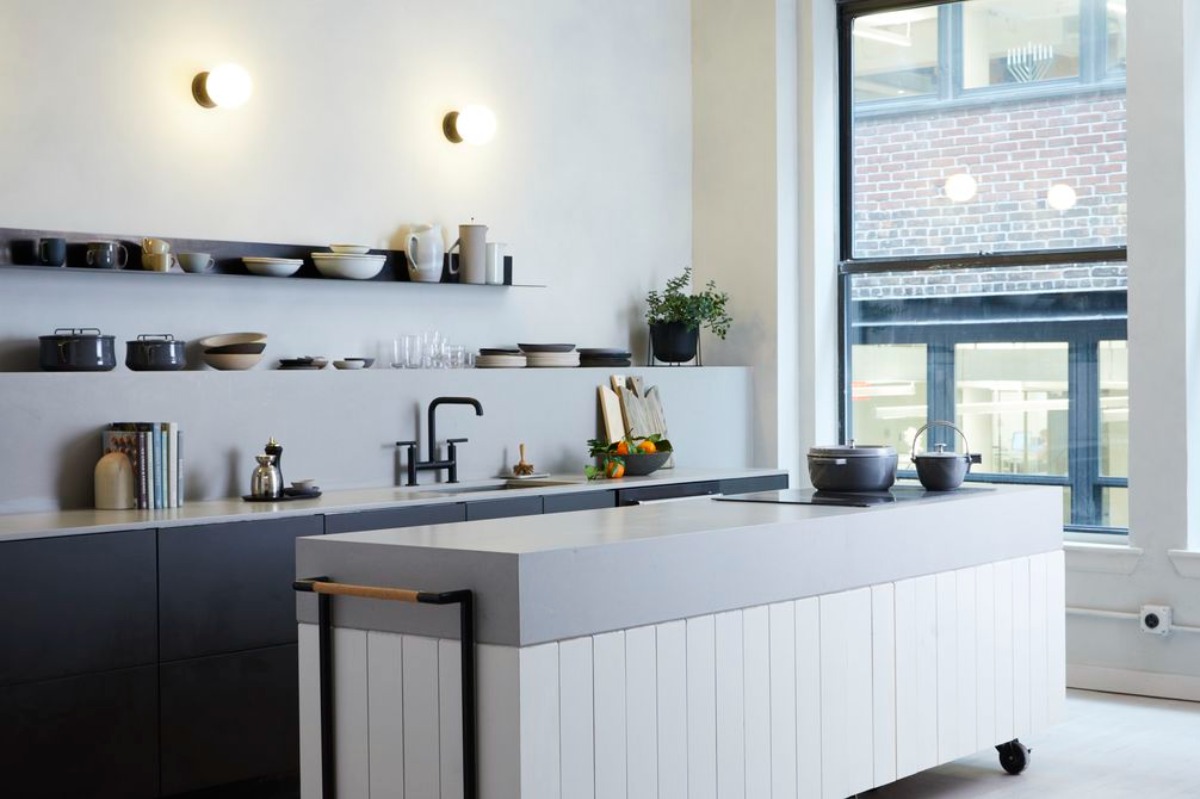Shopping for light bulbs can be as simple or complex as you make it. My roommate and I, who spend an inordinate amount of money at the nearby corner store (because it’s right there!), tend to suffer through whatever light bulbs they’ve got in stock — more often than not they’re soft white 60-watt incandescents. I realize I should be embarrassed.
But in our living room, where there are four to five lamps lighting a space barely larger than a dog house, these hazy bulbs create a warm, layered blanket of light that we love in the evenings. In the kitchen, however, where we try to use them in lieu of our fluorescent ceiling fixture, they fail — in the kitchen, it turns out, you actually need to be able to see.
What every kitchen needs, as much as a sharp knife or a mixing bowl, is great light. The lighting experts at Batteries Plus Bulbs — specifically Jori Gohsman, one of their Senior Category Managers — were kind enough to set me straight:
Here’s what kind of light bulbs are good for your kitchen, and how to get plenty of cozy vibes while still lighting it up right. I won’t be offended if you skip to the end for their suggestions, but what follows is how we got there.
* * *
Color temperature
The first thing you need to know is that Kelvin is actually more important than wattage when it comes to selecting a light bulb; that’s what will tell you the color temperature of your bulb on a spectrum of cool (indicated by a higher Kelvin) to warm (lower Kelvin).
Cooler bulbs are easier to see by, so that’s what you want to rely on in the kitchen — whereas warmer bulbs give off that cozy, casual vibe that makes lounges and restaurants so inviting. Besides affecting visibility, the color of a bulb can also change the dynamic of a space just as any other element of decor can.
Here are the different options you can shop for, starting with the most kitchen-friendly:
- Daylight (5000K): With a white, almost bluish light, daylight bulbs are meant to “resemble noon on a cloudless day” (I’m thinking this is what my fluorescents must be). Rather than using them everywhere in a kitchen, spring for them as accents where you do food prep or read recipes, for example. (Reading, Jori tells me, has actually been proven to be easier under daylight bulbs than any other.) Style-wise, they’ll make cool-colored decorations pop but will muddy any orangey decor.
- Cool White (4100K): A great workhorse bulb for your kitchen and bathrooms (or for any room where the decor is blue or green rather than reddish in color), cool whites are crisp without feeling overly so.
And on the other end of the spectrum, best for rooms where knife work isn’t required, are the warmer options:
- Soft White (2700 to 3000K): This is what classic incandescents emit: a gentle, yellowish, familiar light that’s warmer than a cool white bulb would give off. It will pull out the reds and oranges in your decor, so relegate them to rooms that aren’t too blue.
- Warm White (2400K): The warmest color temperature, warm white bulbs more closely resemble candle light than a bulb at all. They’re all ambiance — so they do their best work in the living room, dining room, and bedroom.
* * *
Bulb types
I am sure that many of you froze in your seats when I mentioned traditional incandescents, which are known not just for their warmth (2700K) but for being known energy hogs (they put out more heat than light, according to National Geographic!). There are, fortunately, more energy-efficient and longer-lasting alternatives:
- Halogens, which are available exclusively in a relatively warm 3000K, show 100% true color — something that a jeweler, for instance, might care about, and they’re inexpensive. But they’re now considered an old technology, and will actually dim as they warm.
- CFL’s, which can be spiral-shaped as in the one pictured below, are basically mini-fluorescents meaning they can require some time to “warm up.” But while they can last ten times longer than traditional incandescents (I have one that I haven’t changed in three years!) and are available in any color temperature, they contain a small amount of mercury — so if you break one, the extensive cleanuprequired makes them less than convenient.
- LEDs, which initially were known for their higher price point, have the lowest energy cost and are available in increasingly affordable and flexible technology. You can choose from directional, semi-directional, or omni-directional styles — the latter being the most diffused, best for lamps, and directional being best for spotlighting — and almost any color temperature. New warm LEDs (around 2400K) would be great for a chandelier or moodier lighting, and you can even find vintage-inspired Edison-style versions (2000K), if you’re hoping to add (efficient) ambiance to a living room.
But with so many ups and downs to each, the bulb style you choose is a personal (or even political) choice as much as an aesthetic one.
* * *
Adding ambience
I asked Jori if layering decorative bulbs, with their warm amber glow, in space that’s already outfitted with cool whites and daylights (like a kitchen) would ever be a good idea. “You can get away with having both,” she said — and I cheered! — but recommended instead installing a dimmer for more control over brightness, or even opting for color-changing LEDs so you can control the temperature (as you dim them, they’ll cool all the way from 3,000 to 2,200 Kelvin).
So the tiny lamp with a soft white bulb in my kitchen, which emits a soothing yellow light we simply cannot see by? It can stay! Plus, writes Alyssa Longobucco in her manifesto for kitchen table lamps, “in a room that typically only ever boasts overhead lighting, small-scale countertop lamps can be a great way to play around with scale and add charm. Not to mention, they’re an ideal way to upgrade the style of your space without spending a ton of money like you would have to with overhead fixtures.” Done.
* * *
Light fixtures (for lots of light) we love:
6-Bulb Sputnik Chandelier, $63
A sputnik-style chandelier (though it might not come immediately to mind when thinking about kitchen lighting) is actually a great option for a kitchen that’s low on junction boxes, since it funnels light into six separate bulbs.
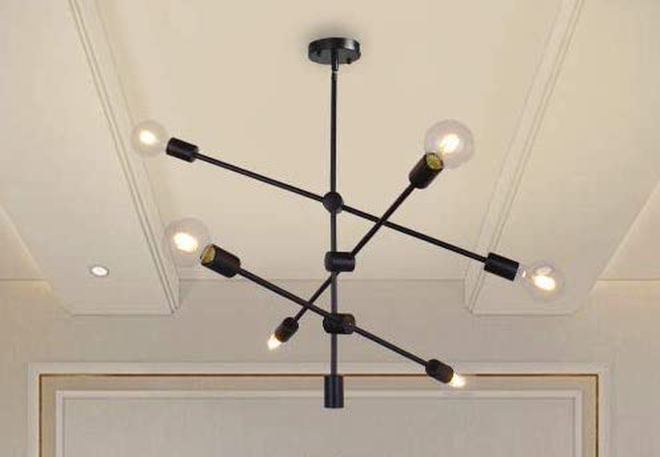
PHOTO BY WALMART
Handmade MIMA Lamp, $175
Similar to a wall-mounted globe light in brightness, but gentle like a table lamp with a shade, this little handmade guy is the best of both lighting worlds.
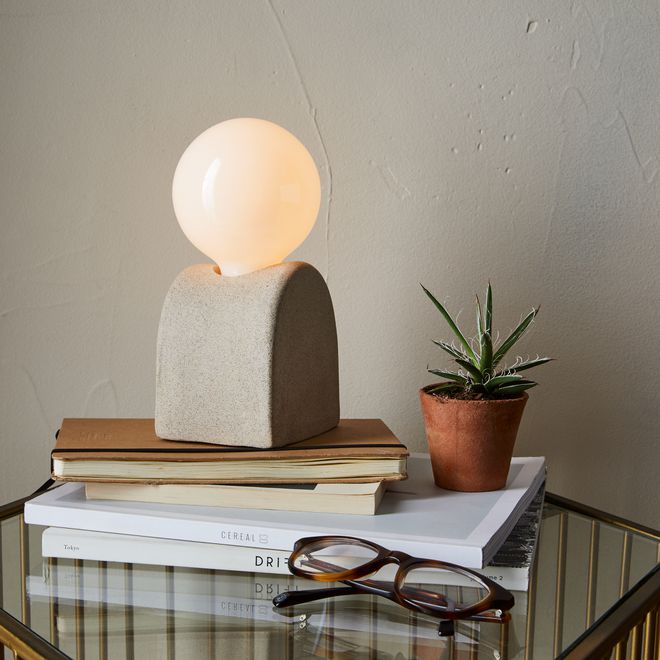
PHOTO BY TY MECHAM
Swing-Arm Sconce, $129
Sconces are another great option for adding extra kitchen light. When mounted above a counter or stove, they provide maximum visibility for chopping, seasoning, and checking on a proper sear.
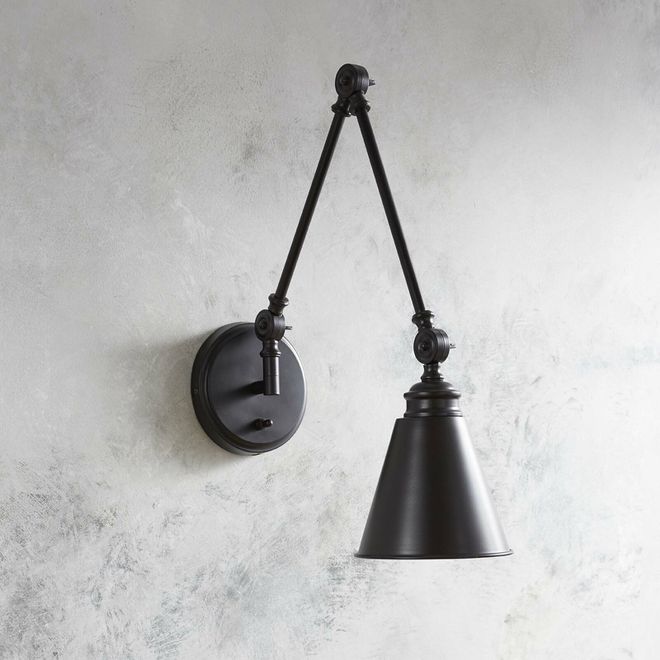
PHOTO BY WAYFAIR
Aretha Flush Mount, $698
This stunning light fixture might scream “dining room!” but for a grand kitchen, it’ll look right at home and provide plenty of overhead light.
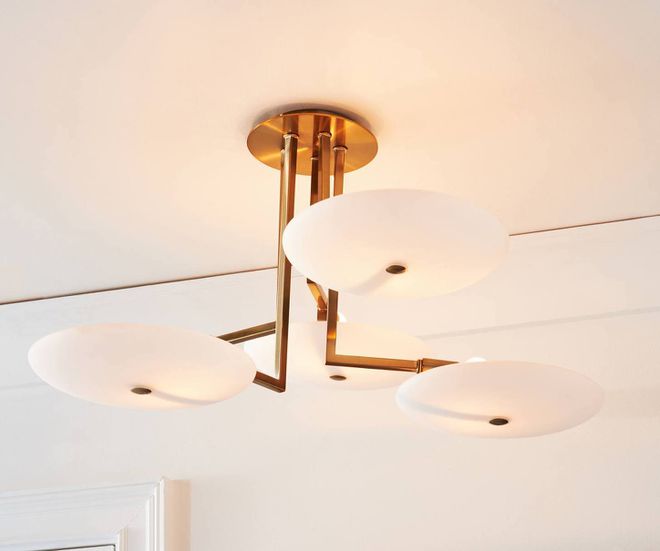
PHOTO BY ANTHROPOLOGIE
Clear Shade Farmhouse Lamp, $38
If you’re working with multiple junction boxes, you can definitely get away with one-bulb flush mount lights, like these. They’re kind of like an upgraded boob lamp, and the clear glass ensures the most light from the bulb shines through onto your work surface.
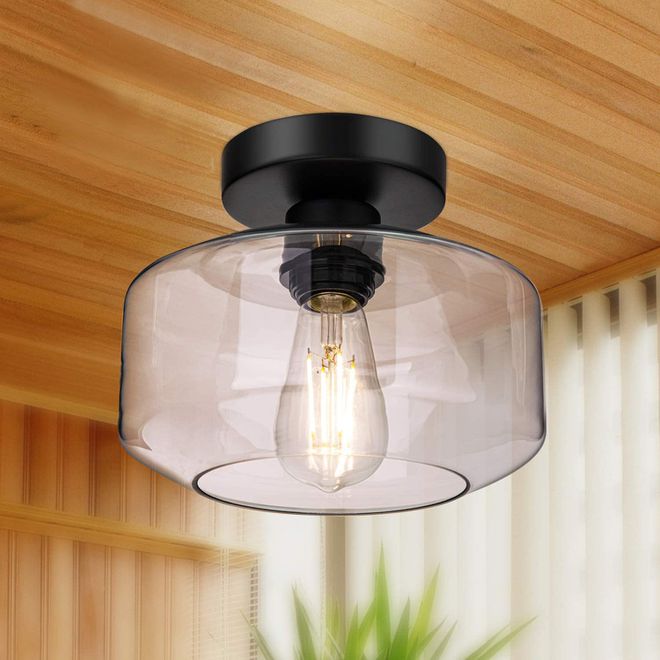
PHOTO BY AMAZON
Rattan Globe Pendant, $200
Who says the lighting over your kitchen table can’t spill into the work area? This pendant lamp provides warmth from the natural fibers, moodiness over the dining area, and the added benefit of more kitchen light. Win-win-win.
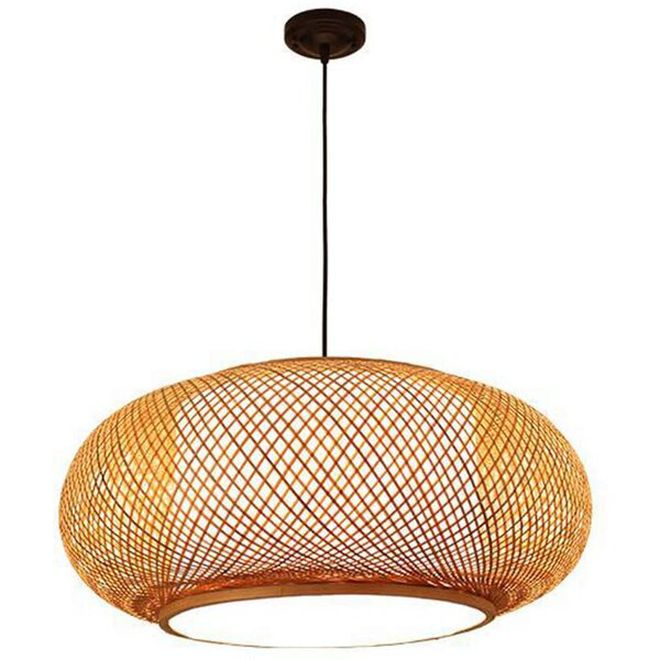
PHOTO BY WAYFAIR
Cosmos 6-Point Star Light, $250
This guy’s not as imposing as a sputnik, but just as many bulbs.

PHOTO BY LAMPS PLUS
Which kinds of bulbs do you prefer in your home? Tell us all about it below!
This post contains products independently chosen (and loved) by Food52 editors and writers. As an Amazon Associate and Skimlinks affiliate, Food52 earns a commission on qualifying purchases of the products they link to.
